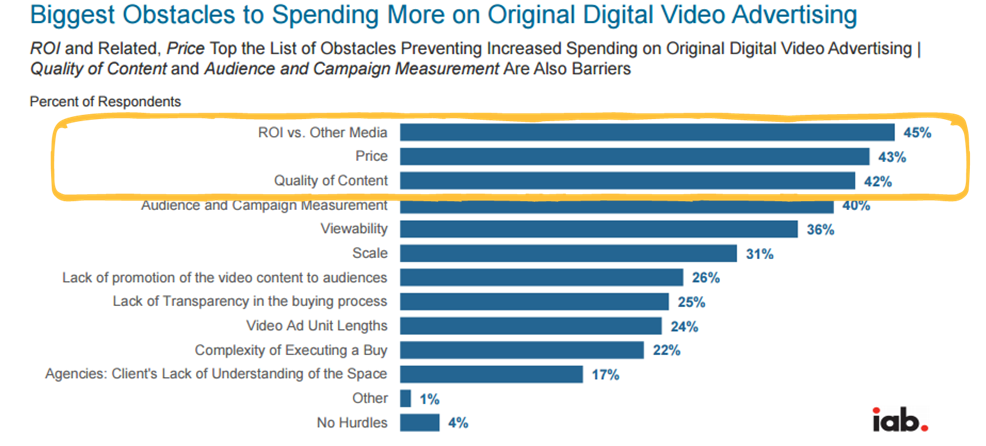Some marketers use viewability as a way to gauge online video success, but a recent STRATA study suggests this might be the wrong metric to measure.
Designed as a measurement for digital video ads, viewability is meant to give you an idea of whether or not people see the content you promote. However, when it comes to viewability, marketers aren’t getting a clear answer of whether people are actually watching and engaging in the video.
The Media Rating Council defines a video as ‘viewable’ if 50 percent of its pixels are visible for at least two seconds. But Strata discovered that very few people can recognize a brand within two seconds.
24% of people can identify the brand and products in a video within 1-2 seconds, which is what the Media Rating Council defines as ‘viewable’
Just about one-quarter of survey respondents said they could identify what brand and products were in a video within a second or two. This means that 75 percent of viewers need more time to determine who it came from or what it’s about, which isn’t an effective way to measure whether or not it was successful.
Brands that see a lot of results with video marketing don’t hang their hats on viewability metrics. They’re working toward views, engagement and click-throughs to assess whether the video content is effective.
Marketing Land’s Amy Gesenhues interviewed marketing execs from Tough Mudder and AARP to learn what’s driving their success and how they determine the ROI of their video content.
Comments show real connections with the video content
AARP’s Tammy Gordon said comments are the most valuable result for the brand because it shows the message is resonating with viewers.
Speaking about a specific campaign’s success, she pointed out that “While the 250,000+ views were awesome, the more insightful metric was the 150+ comments from people who … shared stories.”
Engagement (not just views) leads to conversions
Tough Mudder’s Jerome Hiquet said the brand is focused on engagement over views, because people who not only watch videos from start to finish but also go on to share them with their personal networks are more likely to convert and sign up for an event.
“We don’t want consumers to view a video and close their screens.”
“We don’t want consumers to view a video and close their screens; we want them to spend time engaging with our websites and social channels, sharing our videos within their network, and, then, ultimately, purchasing tickets to participate in an upcoming event,” Hiquet explained.
In a recent blog post, Brafton’s Senior Content Marketing Strategist Sara Berke gave offered four metrics that will help marketers’ quantify the return on their investment in video:
-
When a user hit play
-
If they replayed
-
When they paused and for how long
-
When/if they clicked a CTA
If they stop watching halfway through, your video might be too long. If they clicked a call to action, the video clearly piqued their interest enough to drive a conversion.
Better metrics put a lid on ROI concerns
Specific behavioral data will help you understand when people are really engaged in the video, and whether your content is supporting your goals. This is a stronger indicator than ‘viewability,’ which just means your target audience could have seen your video. It doesn’t mean they actually watched it or made the association with your brand.
As you look to invest more in video this year, you will need better ways to measure results in order to quantify ROI (which is something 45 percent see as an obstacle).
Go into a multimedia marketing campaign with clear goals, such as: We need to increase engagement 30 percent, or we want to generate x more conversions each quarter. These are the metrics that actually show you whether you’re missing the marketing, or hitting your objectives with online video marketing.






